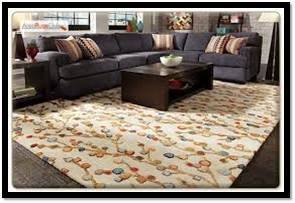Optical Illusions for Small Spaces
Equipped with the right interior design tricks, homeowners can play with space in subtle but powerful ways. While square footage and natural light sources are usually fixed, home decor and furniture are easy to customize, rearrange, and mix and match. The following features serve as optical illusions in small rooms and cramped spaces, whether they appear to increase the size or actually open up leg room to facilitate foot traffic.

Round vs. Straight Lines
Curves and circles provide spatial balance in rooms that are otherwise dominated by angles and straight lines. Because roundness is refreshing and different shapes increase the overall visual texture of a room, smaller spaces are great places to experiment with circular furniture and rugs. For example, round rugs San Diego apartment will soften the angles of urban architecture, from exposed beams to skyline views.

Circular rugs in light, bright hues also allow homeowners to soften and show off their hardwood floors. In a square or rectangular room, a floor full of rug can overwhelm the eye. Instead of unrolling a carpet that stretches from wall to wall, many opt for a round centerpiece that exposes the boards and extends the apparent width of the floor.
Mirrors & Glass Surfaces
 Light passes through glass tabletops, tub enclosures, shelves, and doors. In a small entertaining space, a custom glass tabletop will prevent a coffee table from interrupting the flow of the room. Door glass inserts also allow visibility from one room or space to the next, with the option of tints or blinds to increase privacy when necessary.
Light passes through glass tabletops, tub enclosures, shelves, and doors. In a small entertaining space, a custom glass tabletop will prevent a coffee table from interrupting the flow of the room. Door glass inserts also allow visibility from one room or space to the next, with the option of tints or blinds to increase privacy when necessary.
Mirrors, meanwhile, double the reach of natural and artificial light sources while creating the optical illusion of additional wall and floor space. Some homeowners prop or hang framed mirrors above their fireplaces, while others install floor-to-ceiling mirrors that add a touch of hospitality and light to small entryways and narrow halls.
Vertical Options

Vertical storage space is often underused. Tall bookcases and stacked rows of floating shelves take advantage of a wall's full potential, reaching up to the ceiling for places to store or showcase belongings. If horizontal space is already at a premium, high walls relieve some of the burden.
Up-and-down displays are creative and practical in small rooms, too. A high gallery of staggered photos and paintings will fit between windows or furniture, without compromising any of the space that's needed for everyday movement and furniture arrangement.
